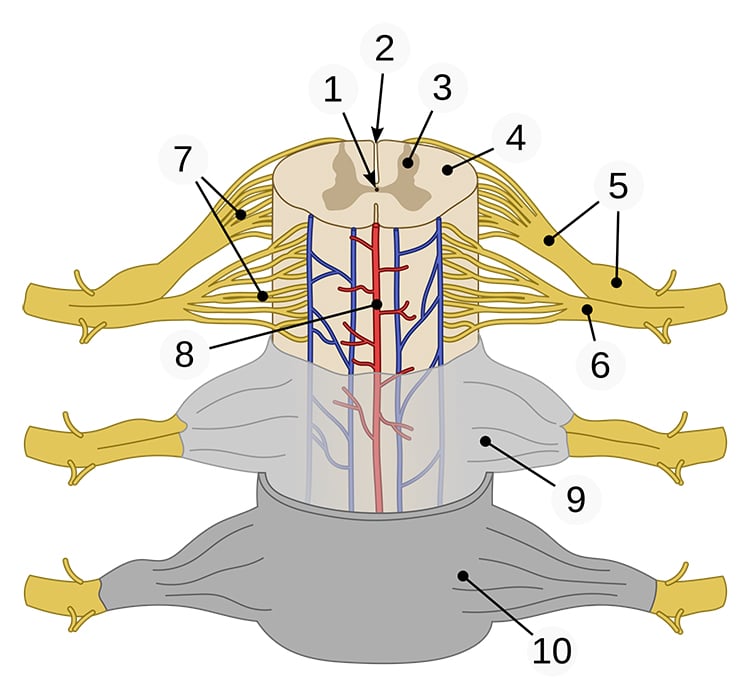A post shared by BBC News (@bbcnews)
The spine is critical to human mobility.
The spinal cord connects the brain to the branches of the nervous system throughout the body.
When the spine is severed, this communication becomes impossible, resulting in paralysis.

Diagram of a human spinal cord. (Photo: Cancer Research UK viaWikimedia Commons,CC BY-SA 4.0)
A team of scientists has developed an implant for the spinal cord which helps remedy the breach.
As described inNature Medicine, the implant quickly restored a shocking level of mobility to patients with paralysis.
Nine individuals have received the rig.

A human spinal cord diagram showing nerves. (Photo: Tomáš Kebert & umimeto.org viaWikimedia Commons,CC BY-SA 4.0)
Each was fully paralyzed in their legs due to damage to the spine.
The researchers embedded multielectrode paddle leads into the spine, attaching the electronics to the nerves with unprecedented precision.
Controlled by a computer, a technique called epidural electrical stimulation (EES) is then employed.
These stronger signals are enough to prompt movement in the muscles.
Without the implant, they would be much too weak or non-existent due to the spinal injury.
They can modulate the neurons regulating specific muscle groups, explained study author Gregoire Courtine toIFL Science.
Subjects were able to do so within a day of activating the implant.
However, it has meant the world to the men who have regained some movement during the study.
Michel Roccati, who severed his spine in a motorcycle accident, is able to walk again.
The first to receive the implant, David M’zee was able to conceive with his wife as a result.
He has since taken steps alongside his infant daughter.
While not yet used in everyday life, the implant has already made a huge difference for recipients.
Its future further benefits are only to be imagined.
Diagram of a human spinal cord.
A human spinal cord diagram showing nerves.